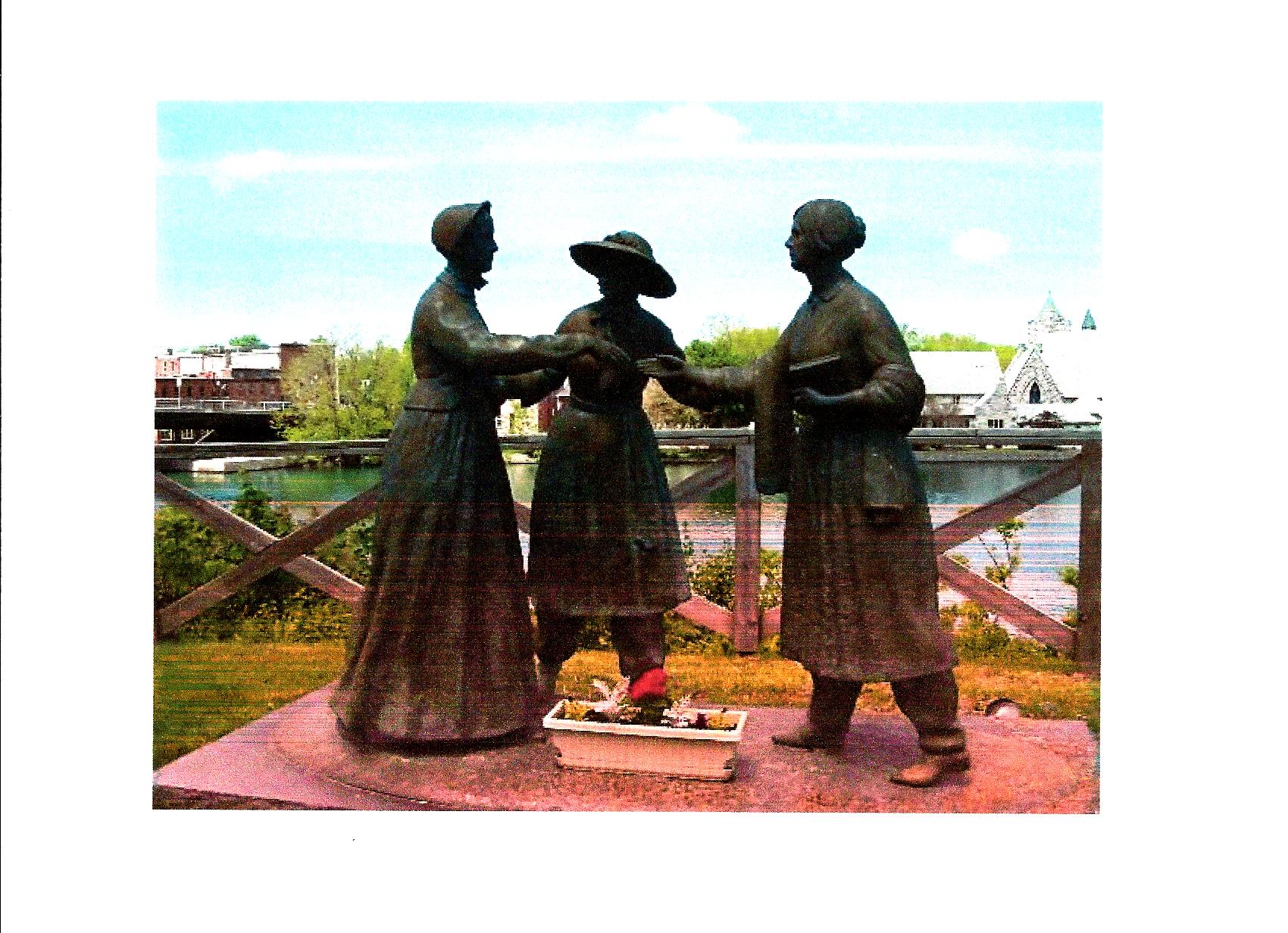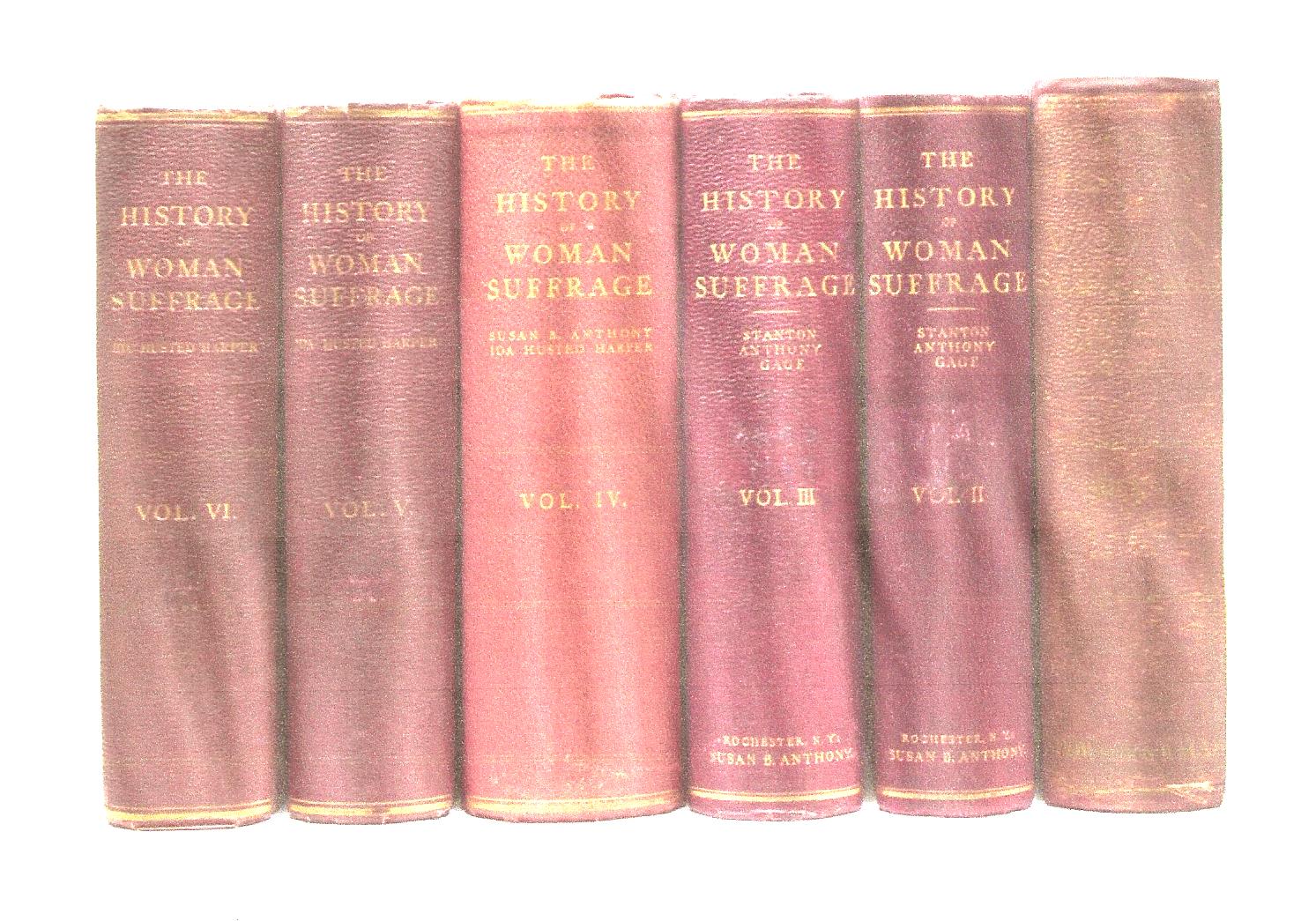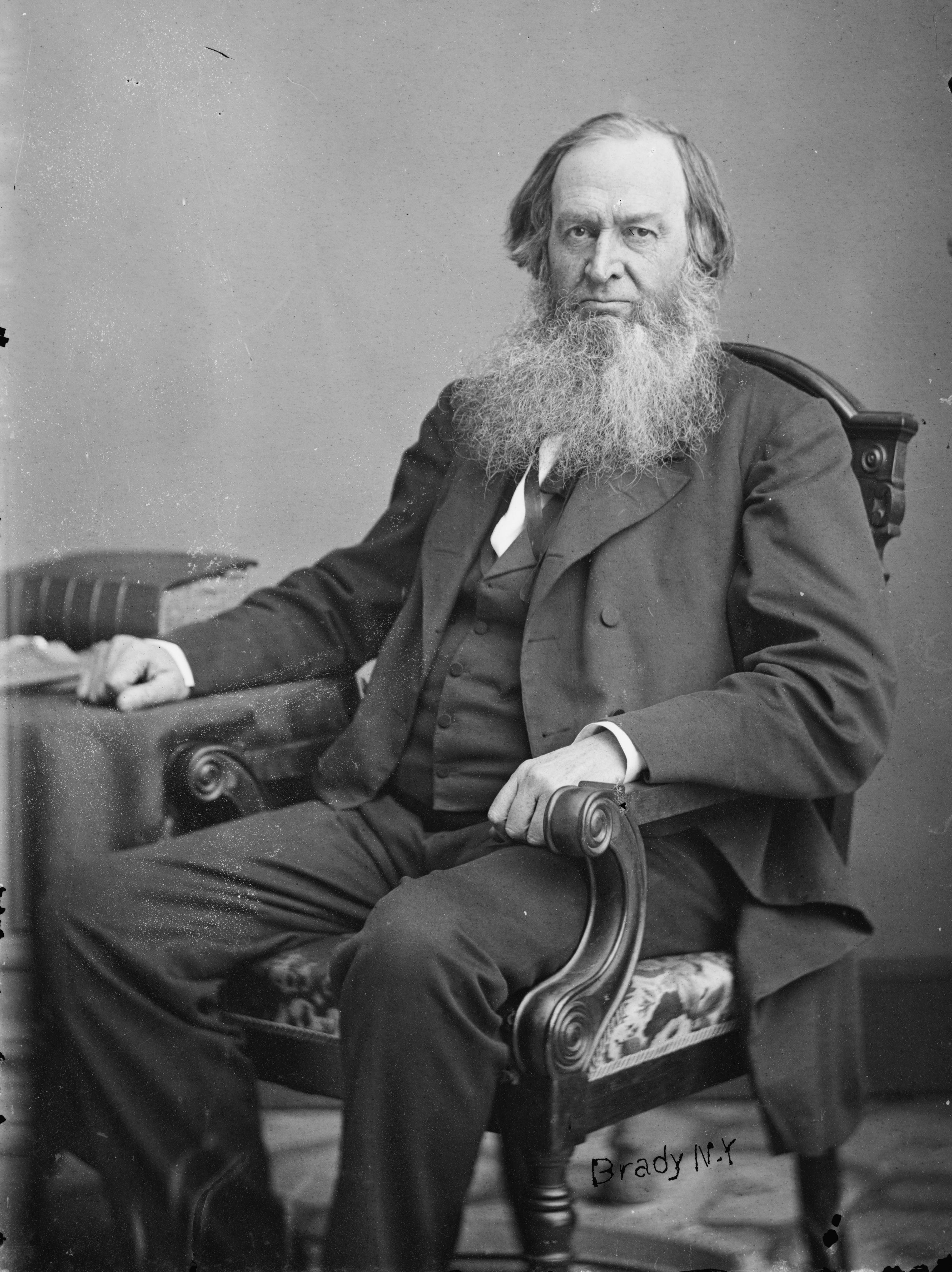The Bosom-est of Buddies!
I promised at the end of the previous post Pioneering Women of Civil War America (Fourth Installment) that I would feature two very famous women together for this post. They were introduced by Amelia Bloomer, who was featured in my second post Pioneering Women of Civil War America (Second Installment).
Anyone Know to Whom I Refer?
If you read my second post, again featuring Amelia Bloomer, you know the answer: Elizabeth Cady Stanton and Susan B. Anthony.

Their famous meeting in 1851 is memorialized on the street in Seneca Falls, New York, where it took place and is pictured below by the “Three Woman Statuette”—a bronzed sculpture of Amelia Bloomer in the center (sporting bloomers) introducing Susan B. Anthony (left) to Elizabeth Cady Stanton (right and also sporting bloomers). Thus, began the addition of Women’s Suffrage and Equal Rights to Susan B. Anthony’s already impressive repertoire of social reform.

I choose to discuss Susan and Elizabeth together because, until I stumbled upon it in my research, I never realized the depth of their partnership–personally and professionally–in building an organized suffrage movement; I would like to focus on that here rather than their individual achievements.
From their meeting in 1851 until their deaths (1902 Elizabeth, 1906 Susan; both at the age of 86), they were the “Bosom-est of Buddies!” In fact, Elizabeth once told Susan that she was more of a friend, husband, and guiding light than her own husband. Personally, they grieved during those times when they were separated for too long. Susan, who never married or had children, helped Elizabeth raise her seven children. Most definitely, they were joined at the hips.
Professionally, they complimented each other’s skills well.
How You Ask?
Elizabeth was great with the written word while Susan was great with speechmaking, oftentimes delivering Elizabeth’s passionate words. Elizabeth wrote pamphlets and attacked newspapers, journals, and magazines with her pen as her sword, while Susan traveled the country campaigning with her pen as sword, collecting signatures with which to petition the states and federal congresses for Women’s Suffrage and Equal Rights.
Between 1881 and 1885, with help from another prolific suffragist author, Jocelyn Matilda Gage, Elizabeth and Susan wrote and published The History of Woman Suffrage. As you can see below, it was a massive undertaking, resulting in a multi-volume project.

Not to take anything away from Susan, and much to Susan’s dismay, she is credited more for the Women’s Suffrage and Equal Rights movement because she was more visible in the eyes of the public and the press. And because at 80 years old, Elizabeth managed to fall from the world’s grace after she offended the Christian Temperance movement and alienated other suffragists for stating in her own book, The Woman’s Bible:
“The church and state have been the greatest stumbling blocks in the way of woman’s emancipation.”
Susan herself would tell you that it was really Elizabeth’s ideas which brought about change for women in the United States and pealed around the world.
Cruelly, after sixty years of crusading for Women’s Suffrage and Equal Rights, neither woman lived to see the passage of women’s right to vote by New York (their home state) in 1917 and by the 19th Amendment to the United States Constitution in 1920 (under the administration of President Woodrow Wilson). Perhaps the 100th Anniversary of Women’s Right to Vote in the United States, which occurred in 2020 when Covid-19 hit the world and kept everyone isolated, will get its due with a belated national celebration.
So, what about Elizabeth’s and Susan’s home lives influenced them to break out of the norm and courageously and aggressively fight for suffrage and equal rights for women, including the formation of prolific countrywide associations to spread the word of their cause?
Let’s start with Elizabeth:
Her earliest influence was her Pa—a constant reminder that he preferred sons. This ignited his daughter’s personal mission to rival the male wit and led her to her father’s law books, through which she quickly gleaned that women were non-existent under the laws of the United States.
But…I believe Elizabeth’s greatest influence was in her older cousin/abolitionist/philanthropist/politician/avid reformer Gerrit Smith (pictured below) whose home in Peterboro, New York, she visited frequently. There, Elizabeth was exposed to the philosophies of his guests–other radical reformers and especially the Iroquois Indians, whose womenfolk had the powers to veto treaties and declarations of war, and they had their own councils through which they shared a voice in legislative matters with their male councils. You can learn more about him at the National Abolition Hall of Fame and Museum.

On to Susan:
She was raised by Quakers who encouraged her activities in social reform. In her temperance work—specifically as regarded the right of wives to divorce their physically abusive husbands—she quickly learned that women needed an equal public voice, and this set her well on her way to crossing paths with Elizabeth.
I will end here with the hope that I have fulfilled my promise to enlighten you, at least, on the unbreakable bond between Elizabeth and Susan and what made them one of the most powerful female duos in the history of the United States.
My favorite book on them is Elizabeth Cady Stanton and Susan B. Anthony: A Friendship that Changed the World by Penny Colman. Oddly enough, I stumbled upon this great resource when I was doing a signing for Sweet Glory (Book 1 of Glory: A Civil War Series) at an independent bookshop close to my home. It came in handy as I was in the middle of researching and writing Train to Glory (Book 2 of Glory: A Civil War Series) in which Elizabeth and Susan make cameo appearances.
Or, better yet, immediately whet your appetite by watching this wonderfully entertaining video, told through reenactors of Elizabeth Cady Stanton and Susan B. Anthony at: https://civilwarwomen.co/2021/04/17/pioneering-women-of-civil-war-america-elizabeth-cady-stanton-and-susan-b-anthony/.
Stay tuned for the next installment, in which I will feature a very savvy and feisty woman pioneer!
Pingback: Pioneering Women of Civil War America (Sixth Installment) - Lisa Potocar ~ Author